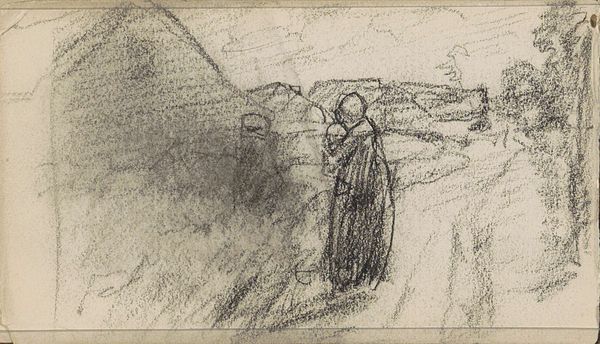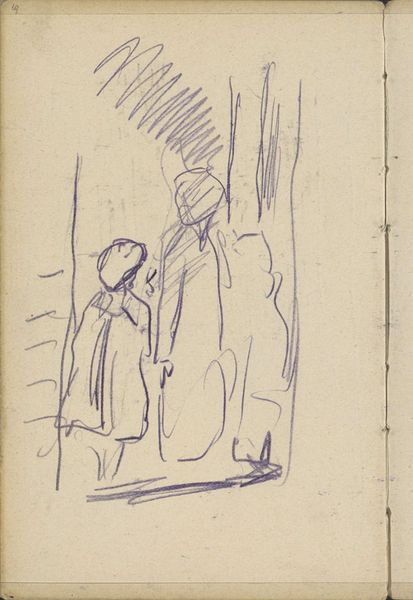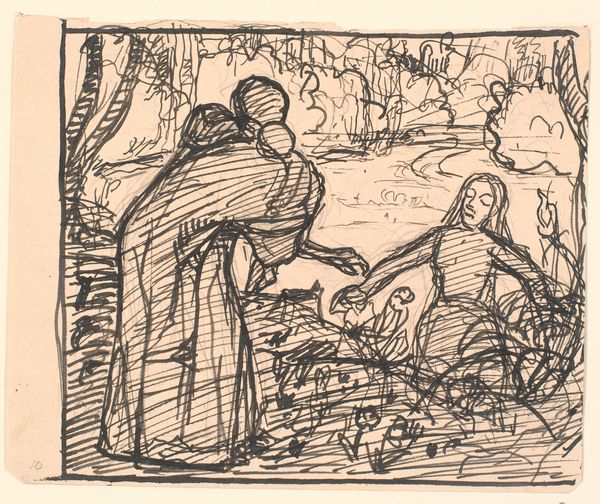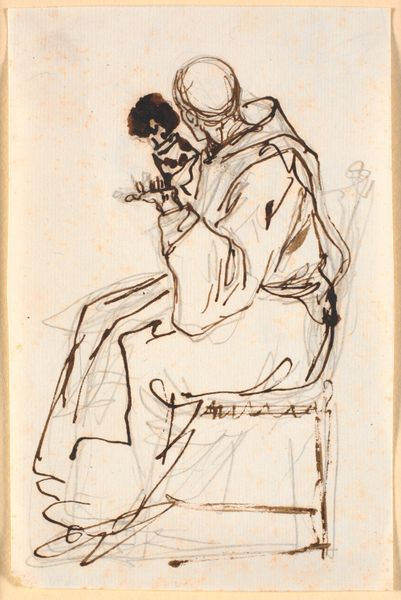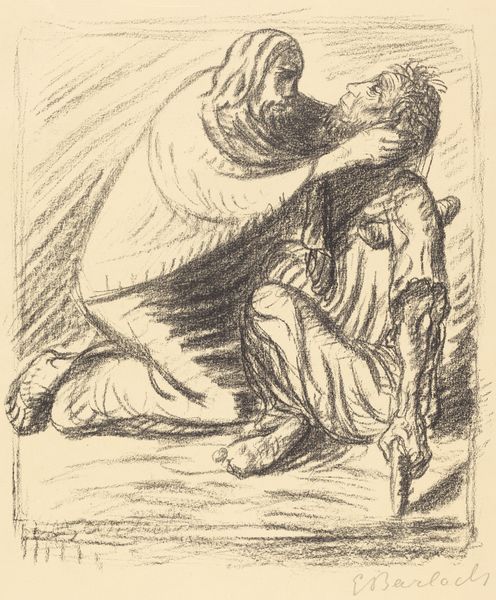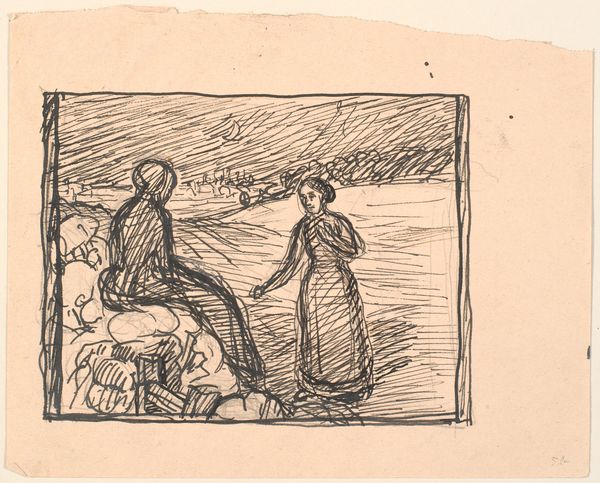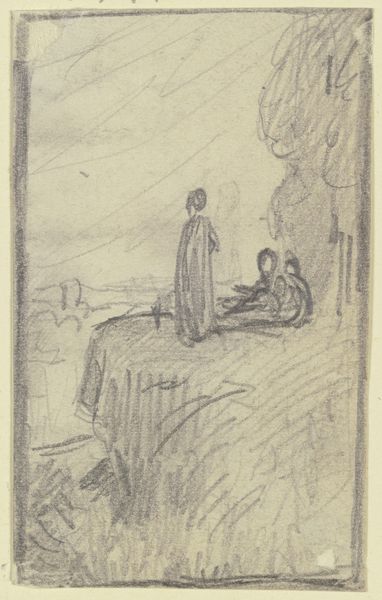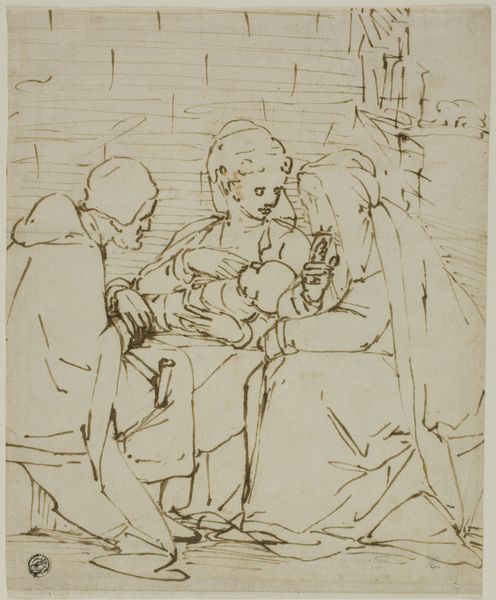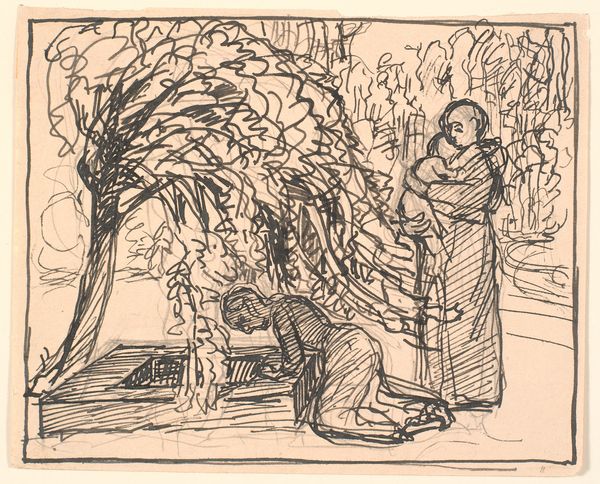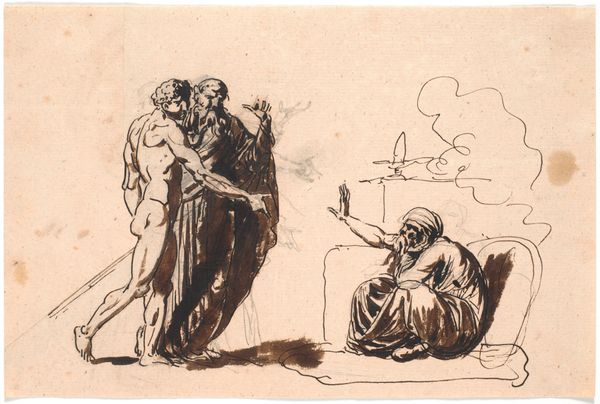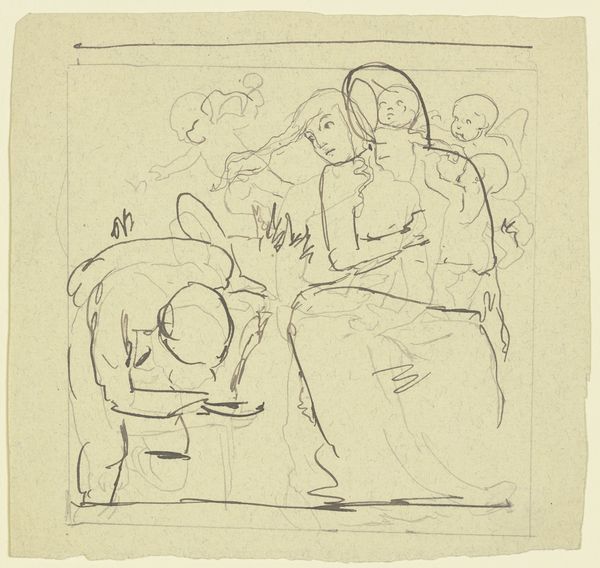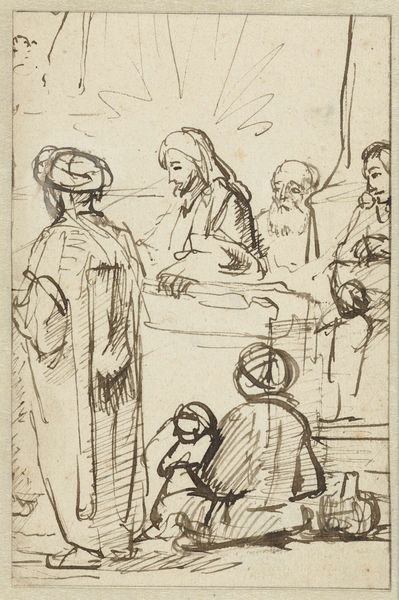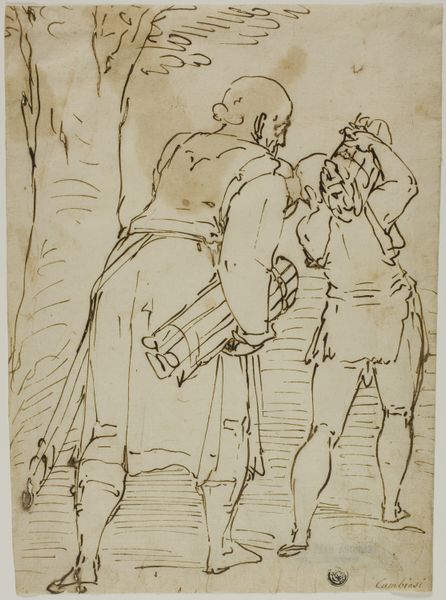
drawing, pen
#
drawing
#
narrative-art
#
pen sketch
#
figuration
#
symbolism
#
pen
Dimensions: 159 mm (height) x 183 mm (width) (bladmaal)
Curator: Here we have "Hvilken af dem er Ulykkens Blomst..." which translates to "Which of them is the Flower of Misfortune..." a pen drawing made by Fritz Syberg in 1901. Editor: The raw lines evoke a strong sense of immediacy and grief, as if capturing a moment of intense sorrow and contemplation of one's place in this difficult world. Curator: Absolutely, the drawing encapsulates the artist’s grappling with themes of despair and fate, especially considering his own personal tragedies—the socio-economic precarity and high child mortality rates endemic at the time, specifically impacting working class families. We are seeing an individual reaction to societal forces here, not in a vacuum. Editor: Look at how the figures are positioned in relation to one another; it seems the grief-stricken is literally weighed down by others while their faith may bring little comfort. And what about the raw materials themselves? Syberg employed pen and paper which suggests both immediacy and also perhaps a lack of funds, hinting at the social constraints he likely operated within as a turn-of-the-century artist. Curator: I agree; Syberg presents us with a meditation on morality. Note also the figures; the female figure at the left reminds us that women's narratives are too often erased. The viewer needs to unpack their preconceived notions, ask difficult questions about representation, and give voice to the experiences and stories often suppressed by patriarchal societal structures. Editor: These figures, so seemingly universal in their sorrow, actually invite scrutiny of the systems that created this scene; a critical reminder that materials carry meaning. Curator: Precisely; the use of pen and paper does indeed offer insight into class dynamics that underpinned early 20th-century creative production and its complex ties to cultural identity and representation. Editor: I feel that, viewed with a historical perspective on class and labour, one can recognize that "Flower of Misfortune..." isn't solely a piece of personal turmoil but an object shaped by materials available to the artist and forces larger than life at play around him. Curator: By acknowledging the broader socio-political milieu, we see Syberg's emotional portrayal here not merely as aesthetic creation but also as potent visual commentary. Editor: Exactly. These artistic gestures act like time capsules revealing forgotten facets of working class life at the time; both humble means and heavy topics merge. Curator: And what a striking indictment it remains to this day. Editor: Indeed. It reminds us how deeply material conditions can influence emotional narratives expressed through art.
Comments
No comments
Be the first to comment and join the conversation on the ultimate creative platform.

